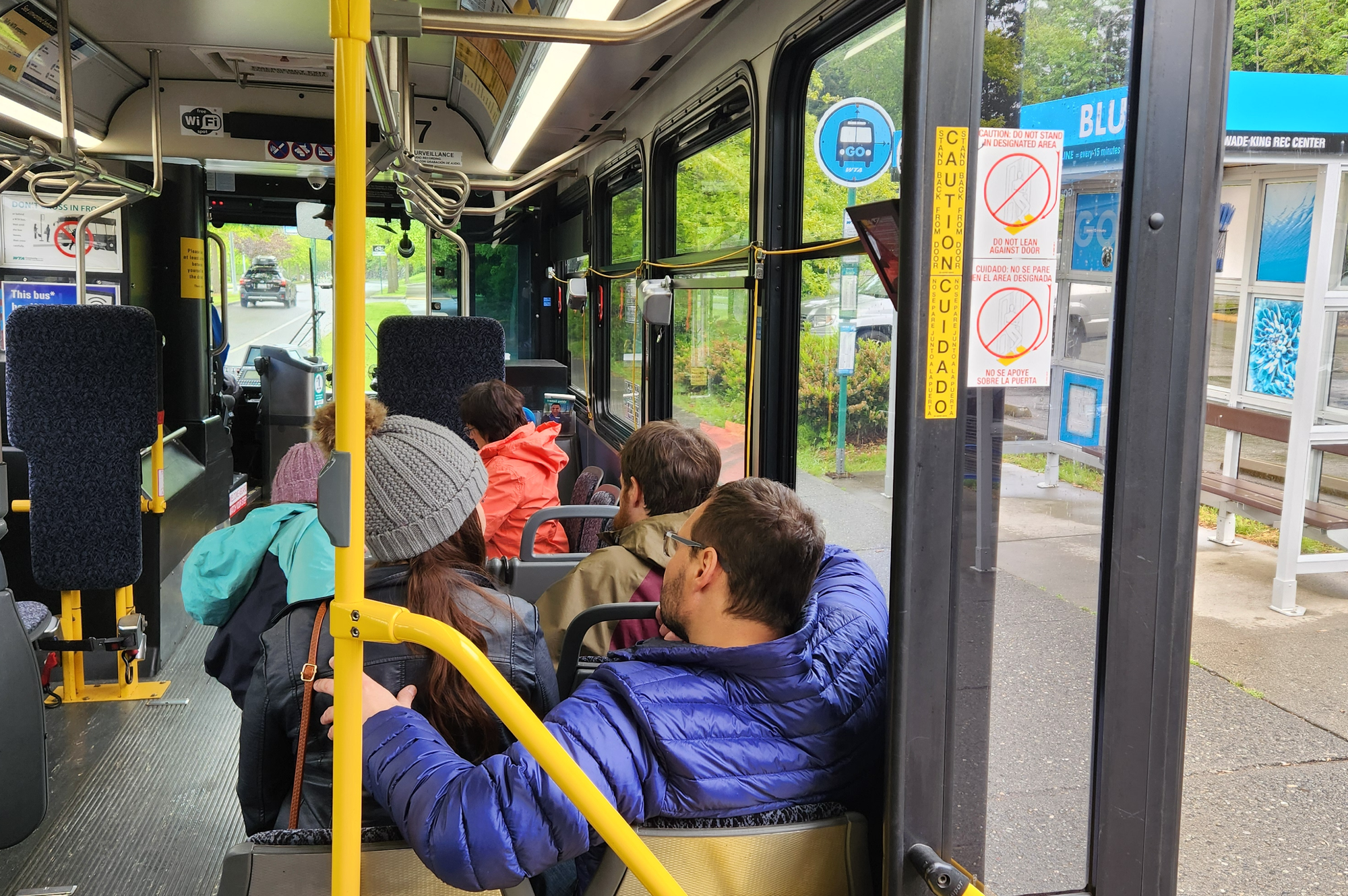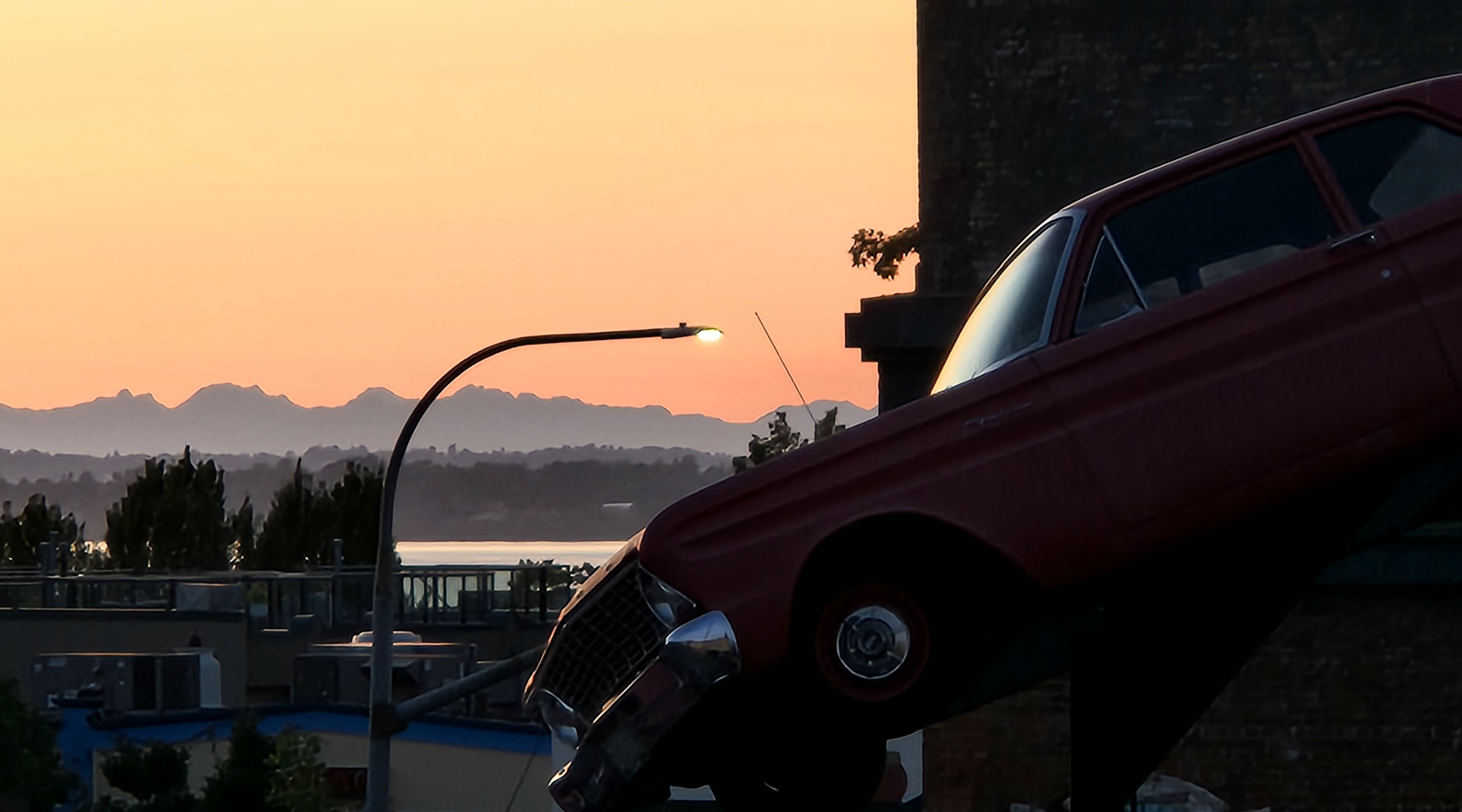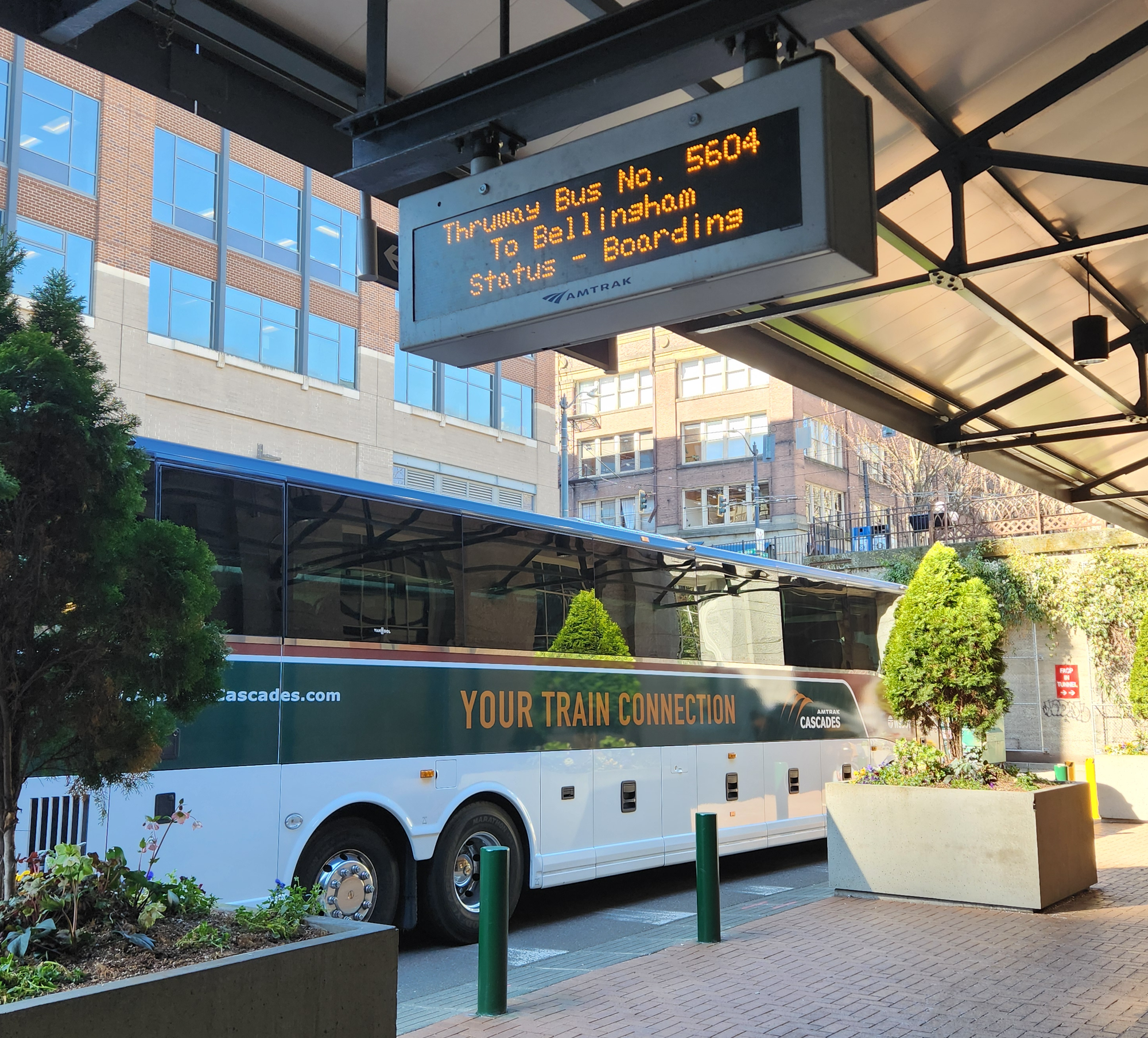Improving Transit to Ease Some Impacts of Tourism in Bellingham
Ideas for how to coax more daytrippers, vacationers, and other visitors out of their cars.

Some high-profile backlashes to “overtourism” in top destinations around the world like Bali, Barcelona, Japan, Portugal, and Venice have been in the news recently as local residents have pressured officials to find better ways to manage the throngs of tourists who have overrun popular spots, and in some cases, squeeze out local residents from their homes due to skyrocketing housing costs.
In an October municipal election, voters in Juneau, Alaska will consider a local ballot measure that would prohibit large cruise ships from docking on Saturdays, a proposal “aimed at giving residents a respite from the influx” of cruise ship tourists, according to The Associated Press.
In Washington and the Pacific Northwest more broadly, the impacts of overtourism are probably most recognized when too many hikers, climbers, and visitors converge on popular county, state and national parks, national forest land, trailheads, wilderness areas, and other treasured outdoor areas. A notable regional example would be the scores of hikers who have overrun the Enchantments wilderness area near Leavenworth in recent years, undeterred by the permitting rules, the risk of a fine if discovered for illegally camping, or an 18-mile (each way) through-hike.

As a thought exercise, BhamByBus wanted to think about Bellingham in the context of the impacts of tourism. While there’s a lot that could be said about the impact of tourism and vacationers on local housing, since this is a transit-focused newsletter-blog, BhamByBus wanted to look more at the ways an improved local and regional transit network could help to mitigate some of the impacts of the visitors who drive cars, SUVs, and trucks to reach and explore Bellingham.
First off, BhamByBus isn’t discouraging daytrippers from Seattle and Metro Vancouver and tourists from farther afield from visiting and enjoying all the great things here in Bellingham and Whatcom County. Please come! Tourism is an important part of the local economy.
It would, however, be great if a greater percentage of daytrippers, visitors, and vacationers would leave their vehicles at home or if they drive to Bellingham, find ways to minimize driving around town when using transit or an active form of transportation, like walking or biking, could work.
Many already do. If you ride the Whatcom Transit Authority’s Route 1 (Downtown to Fairhaven) regularly, it’s easy to spot visitors going to or from the Fairhaven Transportation Center, Bellingham’s Amtrak Cascades train and bus gateway, following step-by-step transit directions on their smartphones. How can we make car-free alternatives more appealing for those visiting Bellingham?

- Amtrak Cascades ridership has been steadily recovering up and down the rail corridor since the early days of the COVID-19 pandemic and the Washington State Department of Transportation has been studying ways to increase the number of roundtrip trains serving Bellingham in the years to come. In the meantime, WSDOT funds supplemental Amtrak Cascades bus service between Seattle and Bellingham, using Van Hool CX45E all-electric motorcoaches, which can run 250 miles on one charge. Since the Seattle-Bellingham zero-emission (and super quiet) buses launched in 2023, it’s not uncommon to hear some passengers say upon boarding: “This is the nicest bus I’ve ever been on.” (BhamByBus agrees.)
- In 2026, new Siemens Airo trainsets are anticipated to start rolling out along the Amtrak Cascades corridor replacing the current fleet of Talgo Series 8 trainsets and the rehabilitated but aging Amtrak Horizon trainsets. BhamByBus rode on Amtrak’s Siemens Venture trainsets in the Midwest earlier this year, so the Airo trainsets will be an amazing upgrade from what Amtrak Cascades currently has. Civic leaders in Bellingham and Whatcom County should enthusiastically welcome the new Airo trains, which will be our primary ambassadors for bringing car-free visitors to and from the area. (Hopefully those visitors will be able to time their train for a sunset arrival, as BhamByBus told the Los Angeles Times this spring.) The new trainsets, paired with increased Amtrak Cascades service north of Seattle, will make car-free trips more appealing.

- While the transit needs of Bellinghamsters certainly shouldn’t be sacrificed to only serve visitors, if there’s a civic desire to reduce parking pressures at popular visitor destinations like Boulevard Park and Taylor Dock, then getting people — locals, daytrippers, and vacationers alike — to think of car-alternatives is important. (In the case of those two destinations, upgraded and realigned Route 1 bus stops, plus sidewalk improvements around 11th Street & Taylor Avenue and S. State Street & 12th Street, would reduce some of the friction that makes the existing transit access there less appealing.)
- WTA's new interim waterfront bus service launching September 22, Route 46 (Granary) and Route 47 (Harbor), should they prove successful, could pave the way for additional service in an area of Bellingham that’s home to popular visitor destinations including Squalicum Harbor and the Portal Container Village — not to mention plenty of jobs along the waterfront — but currently lacks transit service.
- While WTA bus routes connect many of Bellingham’s top spots within the city limits, including Whatcom Falls Park, the current network leaves so many great outdoor destinations and trailheads in Whatcom County out of reach for car-free visitors. Running longer-distance bus service, however, is costly. In the Seattle area, King County Metro runs a select number of popular summertime Trailhead Direct buses connecting Seattle to certain mountain destinations, like the Issaquah Alps and Mount Si.

- There are also some private and nonprofit shuttle services. As Meg White, who jumpstarted the To the Mountains Shuttle connecting Seattle to mountain destinations along Interstate 90, in 2022 told The Seattle Times earlier this year: “We can’t make more environmentally friendly choices if they don’t exist.” Locally in Bellingham, there’s the nonprofit Baker Bus running to Mount Baker with a goal of “reducing traffic contributing to polluting the Nooksack River watershed.” It’d be nice to have additional such services providing shuttle access to trailheads, parks, and other treasured outdoor destinations in Whatcom County and the North Cascades, which could help ease parking pressures — and concerns over smash-and-grab thefts — at certain popular spots.
- Although running WTA bus service all the way out to trailheads in eastern Whatcom County would be challenging to make work financially and operationally, there might be some lower-hanging fruit to create some meaningful transit-oriented parks access closer to Bellingham. About 6 miles south of the Fairhaven neighborhood along Chuckanut Drive is the Lost Lake Trailhead Parking Area in Larrabee State Park, which is before the point along S.R. 11 where large vehicles are prohibited. Since that particular parking lot is close to a handful of Chuckanut Mountain trailheads and the recently improved route down to Clayton Beach, even limited, seasonal weekend transit service to that particular parking lot would be great. If BhamByBus could make new WTA bus operators, buses, and funding magically appear — which, of course, isn’t possible — here’s something to envision: A Larrabee State Park bus route connecting Bellingham Station with the Lost Lake Trailhead with stops at WWU’s C Lots off Bill McDonald Parkway (which are free on weekends), 12th Street & McKenzie Avenue in Fairhaven, and Woodstock Farm along Chuckanut Drive.
There’s already a lot in Bellingham that makes the City of Subdued Excitement a great destination for transit-oriented and car-free visits. But there’s more work to be done to coax more daytrippers, vacationers, and other visitors out of their vehicles.
- Have local and regional transit and transportation news to share? Email BhamByBus.
- Follow BhamByBus on Instagram.
